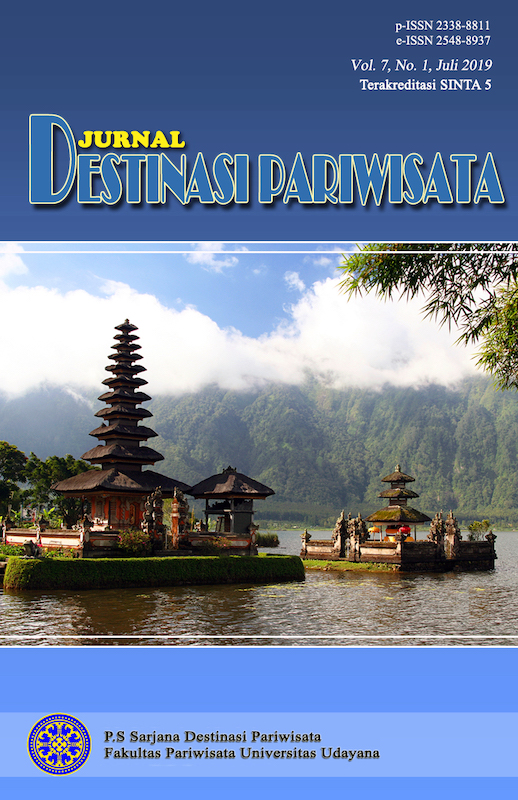Peranan Masyarakat Lokal Desa Kukuh dalam Pengelolaan Daya Tarik Wisata Alas Kedaton, Kabupaten Tabanan
Abstract
Alas Kedaton tourist is a natural tourist attraction. The tourist attraction offered such as forests, monkeys and bats in this natural attraction. In the middle of the Alas Kedaton forest there is a Dalem Kahyangan Kedaton temple that is unique. The choice of this location as a place of research is to find out how the management and role of the local community of Kukuh Village in developing Alas Kedaton as a tourist attraction.
The research methodology used is this study is a descriptive qualitative research, with observation, interview, literature study and documentation techniques. Data sources are obtained from primary data and secondary data. The theory or concept used is the concept of role, local society, tourist attraction and management.
The result of this research is that management in Alas Kelaton tourist attraction involves local communities actively. The involvement and role of the local community of Desa Kukuh is empowered to become a member of the management body, counter staff, janitors, local guides, security officers, Alas Kedaton Trader Group (KPAK) and as well as forming tourism awareness organisations such as tourism awareness groups (Pokdarwis).
Keywords: The Role of Local Communities,Management, Tourist Attractions









